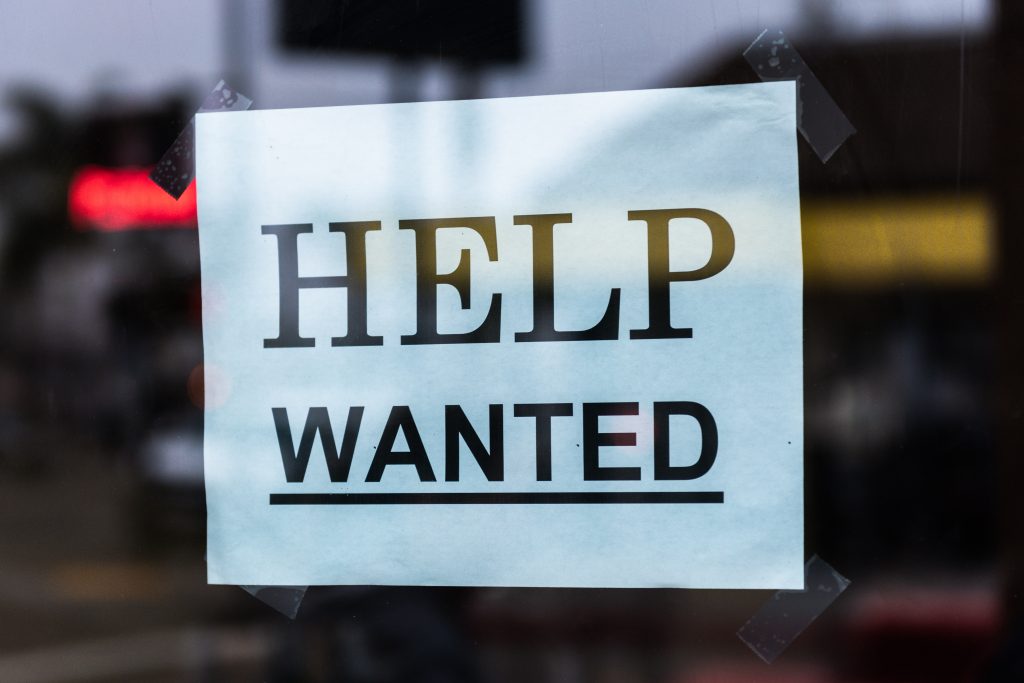Published on
Great Resignation or Great Revelation? Valuing Worker Experiences

One of the most popular sessions at CAEL’s annual conference featured speakers associated with three banks in the Federal Reserve System (the Fed): Sarah Miller, a Senior Advisor from the Federal Reserve Bank of Atlanta. Ashley Putnam, Director of The Economic Growth and Mobility Project at the Federal Reserve Bank of Philadelphia, and our very own Earl Buford, CAEL President, who moderated the session. Buford is a Director on the Federal Reserve Bank of Cleveland’s Pittsburgh Branch board. They presented “Creating Job Quality Through Education Partnerships and Workforce Investments,” which was part of our Workforce Talent Solutions track.
The speakers offered great insight into how addressing economic challenges and opportunities isn’t limited to conducting monetary policy. As the Fed notes, its functions are aimed at “[promoting] the effective operation of the U.S. economy and, more generally, [serving] the public interest.” That includes striving for maximum employment—part of what is known as the dual mandate—and promoting community development.
Putnam and Miller contextualized the importance of these aspirations with respect to pandemic recovery and the benefits of adopting a worker-centric approach in pursuing these goals. They reminded us that the CAEL community’s work isn’t just an ethical imperative—it’s an economic investment. Whether you’re an intermediary or work directly with adult learners, when you support their economic mobility, you’re supporting broad economic growth and health.
For Putnam and Miller, solving workforce and economic challenges is grounded in localized, evidence-based approaches to community development. The two work to amplify regional benefits through partnerships around the country.
As Putnam and Miller noted during their session, pre-pandemic research on automation established that many of the nullified jobs were those held by low-wage workers, workers of color and women. Now two years into the pandemic, the Fed has conducted a follow-up study that confirmed that the pandemic is only accelerating this trend of disproportionate disadvantage[1].
Putnam and Miller also reminded us that previous crises have shown that economic recovery is not equitable either. The pandemic is no different in that regard. Women and communities of color are slower to regain wealth and income. Although there was a bounce back from pandemic lows in the stock market and the aggregated unemployment rate, the gap between this measure and Black unemployment has only grown[2]. As of December 2021, the Black unemployment rate was 7.1%, Compared to 3.9% overall.
During their session, Putnam and Miller flipped the script around what is often called the great resignation. Instead of resigning ourselves to the great resignation, they challenged us to find within it a great revelation. They pointed out that the traditional understanding of economic conditions is dominated by a demand-side perspective: What are businesses saying? They mention they are having problems sourcing employees. They blame stimulus payments and expanded unemployment benefits for dulling the appetite for work.
While Putnam and Miller noted that data dismiss such claims[3], they stressed an even more important point: When we make workforce decisions without weighing the experience and perspective of workers themselves, we are only getting half the story. The duo urged us to complement the extensive quantitative workforce data available with the stories behind those numbers—why workers stay out of the labor market and pursue additional education. To bolster such insight, Putnam and Miller have listening sessions planned with workers throughout 2022.
As constructive as seeking answers may be, Putnam and Miller caution against overlooking a potential sea [CA1] change in the labor market—one that has lent workers unheard of agency and choice. Maybe there is a success story here in which some workers have been able to use expanded unemployment insurance to access education and training and reconnect to work in a new way.
At the same time, Putnam and Miller acknowledge that, for many, non-participation in the labor market is not a choice at all. They point out that the disruptions to the child care sector experienced throughout the pandemic has had a disproportionate effect on the labor market, specifically on women in the workforce[4]. Others have contended with health concerns, quarantines and on-again/off-again in-person schooling. Add it all together, and it only compounds the chaos in an already unstable environment for overstretched workers.
Adults looking to upskill or reskill must balance all of the above with the added demands of coursework. For them, there is a great opportunity to center workers’ experience that resonates with CAEL’s legacy: valuing and rewarding what workers know regardless of where or how they learned it or how long it took them to do so. As Buford noted, the CAEL community witnessed CPL’s profound ability to help build talent pipelines of skilled workers for value-added industries. That’s one of the reasons he planned CAEL’s upcoming national awareness campaign on credit for prior learning (CPL) and its effectiveness for adult learners.
Putnam and Miller contrasted valuing learner experience with the trend of degree inflation—something that plagued past economic downturns. Degree inflation occurs when employers add degree requirements where none had existed before, even as job descriptions and salaries remain static. It can further marginalize underserved populations, as we know that time and financial barriers to a college education are high.
But what if employers and educators recognized competencies rather than limiting themselves to degrees? As Putnam and Miller note, sometimes workers themselves don’t value the skills they possess. A janitor who loses their job may assume he has to start from scratch, yet there are a number of skills they have acquired and honed. Examples include occupational safety, time management and staying disciplined while working alone. These are legitimate skills that employers say are in short supply. A recent paper from the Federal Reserve Bank of Philadelphia notes that this underscores a moment of opportunity for non-degreed workers.
Putnam and Miller describe the application of CPL principles in the workplace. Although employers are much more receptive to skills-based hiring, they largely don’t apply this as an internal process. The missing component is valid assessment methodologies. This is an opportunity for additional education-employment collaboration around the CPL concept. By finding ways to assess and value workers’ skills, we can show them that they may not be as far away from their education and career goals as they may think while shifting employer preconceptions about the type of candidate they will consider and why.
Putnam and Miller hope that the conversation around partnerships to support economic mobility continues. They [CA2] recently helped publish Workforce Realigned, a book collaboration among Social Finance and the Federal Reserve Banks of Atlanta and Philadelphia. It is a collection of case studies that exemplify the power of partnerships covering topics such as institutional investment in student outcomes, income share agreements, linking funding to results and other ways to shift the financial burden of education away from students.
As Putnam and Miller said during the workshop, when we diversify the support for adult learners, we not only create better opportunities for all workers to access the education and training they need to get quality jobs, we also de-risk public and private sector investments.
I thank Putnam and Miller for supporting our conference and sharing such important and useful information with us. If you’d like to learn more about how to benefit from a membership within the CAEL community, contact cael@cael.org.
[1] Ding, L. and Saenz Molina, J., 2020. “Forced Automation” by COVID-19? Early Trends from Current Population Survey Data. [online] philadelphiafed.org. Available at: <https://www.philadelphiafed.org/-/media/frbp/assets/community-development/discussion-papers/discussion-paper_automation.pdf> [Accessed 19 January 2022].
[2].data.bls.gov. 2022. Databases, Tables & Calculators by Subject. [online] Available at: <https://data.bls.gov/timeseries/LNS14000006> [Accessed 20 January 2022].
[3] Boone, C., Dube, A., Goodman, L. and Kaplan, E., 2021. Unemployment Insurance Generosity and Aggregate Employment. [online] aeaweb.org. Available at: <https://www.aeaweb.org/articles?id=10.1257/pol.20160613> [Accessed 19 January 2022].
[4] Grunewald, R. and Stepick, L., 2022. What drives the cost of high-quality early care and education?. [online] minneapolisfed.org. Available at: <https://www.minneapolisfed.org/article/2022/what-drives-the-cost-of-high-quality-early-care-and-education> [Accessed 19 January 2022].
Author Perspective: Administrator

